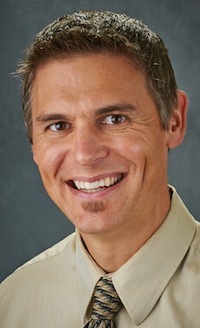Water systems research fills in the details for Africa’s largest dam
When the government of Ethiopia finishes building the Grand Ethiopian Renaissance Dam (GERD) in 2017 or 2018, it will not only have built the largest hydroelectric power-generation plant in Africa, but also stirred up tensions among African nations, and indelibly altered a river that itself has guided millennia of human history in the region.
Built astride the Blue Nile branch of the Nile River, the dam will have a huge impact on water resources on the north-flowing river’s next stops: Sudan and Egypt. Governments around the world tussle over water politics, but what makes GERD even more contentious is that many parties don’t think the Ethiopian government has provided sufficient technical detail on the project.
Paul Block, an assistant professor of civil and environmental engineering at UW–Madison, is one of many researchers around the world and across disciplines trying to bring more empirical data and analysis to the debate.

Paul Block
“Some of the analyses have been fairly simplistic and they need to be more rigorous,” Block says. “We’re laying out scenarios that are plausible so that there are discussion points.”
Block and his students are focusing on how Ethiopia might find the water to fill the dam’s reservoir. One way or another, this process will have staggering implications, diverting about 74 billion cubic meters of water from the Blue Nile.
Block’s group is developing computer models to help predict the outcomes of different methods of filling the dam, accounting for such variables as climate change, evaporation and rainfall. One of his Ph.D. students, Ying Zhang, currently has a paper in review about possible GERD fill policies and their implications for hydropower generation and the Nile’s downstream flow.
“If they fill it slowly, there are fewer effects on the livelihoods of people who live downstream, but that means Ethiopia won’t be able to generate as much hydropower early on,” Block says.
On the other hand, if Ethiopia fills the dam quickly, the country might make a quicker return on its investment — and aggravate the Egyptian government, which fears the dam will disrupt agriculture in Egypt.
Block, who has studied water management issues in Ethiopia for about 10 years, says he and his students have to confront several layers of unknowns in this research.
One way or another, this process will have staggering implications, diverting about 74 billion cubic meters of water from the Blue Nile.
“The dam project was a secret for quite a while, and there’s still not a lot of information on that,” he says. “There’s also a limited amount of monitoring and observation of precipitation and stream flows within Ethiopia.”
The goal, Block adds, is not to advocate for one particular technical approach to the dam, but to make sure that all the governments debating the project have a reliable body of research to draw on.
That said, his insights are already part of the public debate in Africa. In a wide-ranging analysis in the November issue of “Africa Today,” Block gives technical comments on filling GERD’s reservoir, and even points out the hair-raising political and economic consequences should the dam’s construction be stalled. That the article even raises such a possibility only highlights how provocative GERD really is, and how far its effects, positive or negative, will reverberate.
The research brings Block into contact with researchers in fields from law to the social sciences. It’s a powerful example of engineering work that’s impossible to separate from the broader social consequences.
“Everybody preaches interdisciplinary work, but in this case it really is as much as anything figuring out the social and political pieces,” he says. “We’re just trying to add a little bit to that — the technical questions aren’t even the biggest things people are considering.”
Tags: Africa, agriculture, energy, environment, international, water




